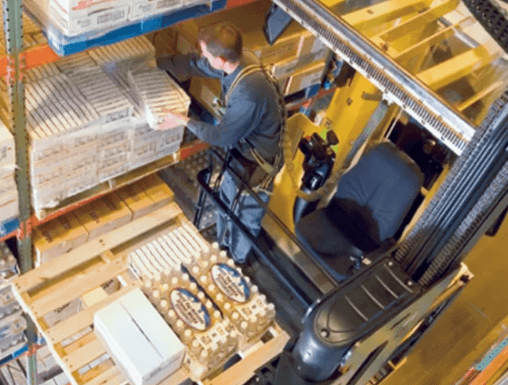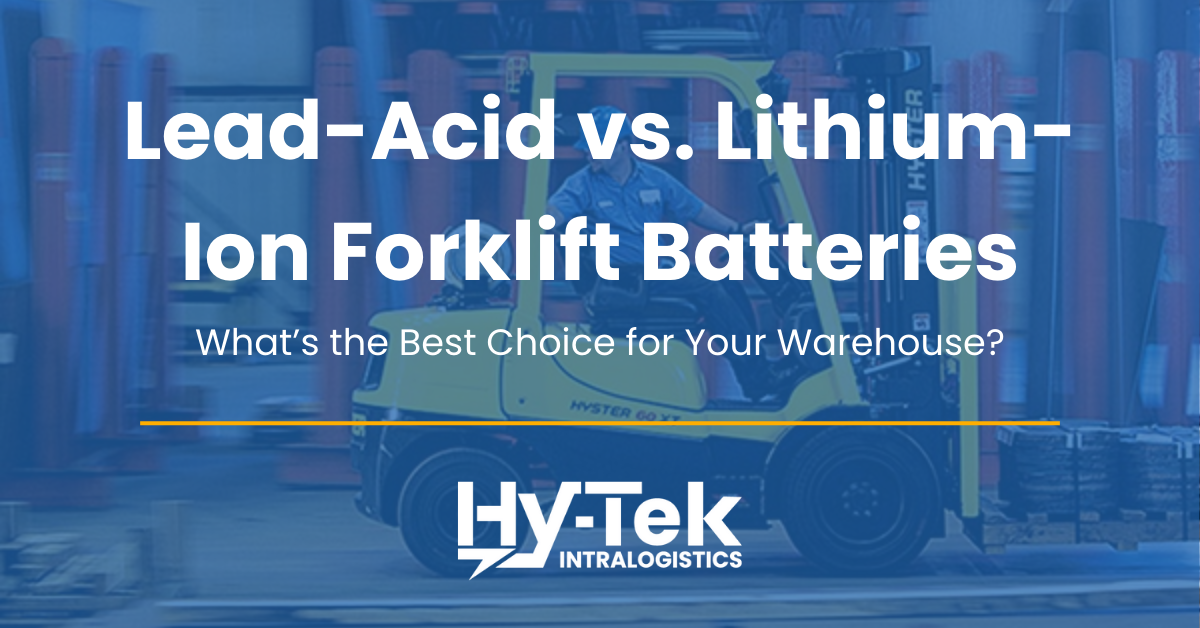Are you considering specialized lift equipment as a way to increase space in your warehousing, distribution, or fulfillment center?
If so, the experts at Hy-Tek Material Handling, LLC. offer these great tips to use when evaluating Equipment Designed for Space Utilization.
Given the ever-increasing complexity of the supply chain and expectations for the on-demand products, there has been a gradual shift from traditional long-term bulk storage to high-density selective storage. Termed “just in time” inventory, this trend involves smaller loads at higher levels of frequency of a larger variety of items. From an operations perspective, this approach changes the way a product is handled, stored, and accessed. When storage is already at the maximum and relocation or facility expansion are not options, companies are looking at narrow and very narrow aisle equipment to regain some of that precious space. However, is converting to specialized equipment, and the costs attached to it, the right answer for you? To assist in your investigation, the experts at Hy-Tek Material Handling, LLC. have pulled together some factors to consider when making the best choice regarding equipment designed for space utilization.
DO establish base data when comparing equipment options.

At the heart of any warehouse, manufacturing plant, or distribution facility operations, having a good understanding of the number of loads to move and the amount of space available to manage and store the loads is critical. However, even in the best-run facilities, space constraints are inevitable, and it can be a daunting challenge to determine what is the best and most affordable solution. Simply take the guesswork out of the equation and start by comparing all your equipment options as a cost per pallet of storage.
DO use the right size equipment.
With the “just in time” inventory trend, investing in the right size equipment is critical. Many people wrongly assume they will be best served by purchasing a heavy capacity lift truck to cover the “worst case scenario” of their lifting needs. But with smaller and more frequent loads as the norm, typically a 3,000 lb. unit is sufficient, and why would you pay for capabilities you don’t need? If you are not sure if a 3,000 lb. unit is still the right choice, take a look at your rack capacity. If your per pair beam capacity is 5,000 lb. and you have two pallets per beam level, then your typical load is 2,500 lbs. or less.
DO understand your current and near-future needs.

Evaluating the decision to incorporate narrow aisle and very narrow aisle equipment designed for space utilization in your facility is a necessary and deliberate assessment. While the volume of purchases for narrow aisle and very narrow aisle fork trucks are increasing over conventional fork trucks, it is important to understand what will be gained and what will be sacrificed when moving to this kind of design. The general rule of thumb is the tighter the space, equipment speeds are slower and as a result, enabling less productivity. In addition, with greater equipment specialization, flexibility is constrained. While requiring more space, smaller conventional forklifts are generally less expensive and allow more flexibility.
DON’T confuse your priorities.

Many facility managers may want both storage density and quick access to loads, but since these are inverse goals, one priority has to eventually win over the other. If throughput or speed is the higher priority, then dense storage with narrow aisles is not necessarily the sought-after solution. However, if gaining 15% to 35% of storage capacity is more important, investing in the narrow aisle or very narrow aisle fork trucks is well worth the capital.
DO be prepared for the costs associated with equipment designed for space utilization.
Narrow aisle and very narrow aisle lifts are considered custom pieces of equipment and are pricier options over standard forklifts. In fact, the more specialized it is, the more expensive it gets. Since cost is normally a huge driver in facility decisions, keep in mind that column spacing and other fixed obstacles need to be added into your calculations, along with the cost of a repositioned rack.
DO work with professionals when debating your lift equipment options so you can take advantage of their experience and expertise to choose the best equipment designed for space utilization and your material handling goals.





